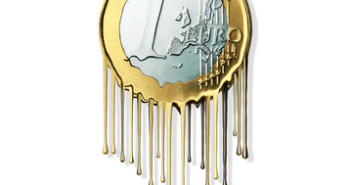A move below 0.5% in headline CPI, the ECB’s mandate, would be seen as a trigger point beyond which the ECB will be unable to simply stand by and keep talking about the potential for further easing measures, says Simon Smith of FxPro.
In the interview below, Smith also addresses the US economy “spring bounce”, the lack of a weakening bias and other topics. Enjoy:
Simon has over seventeen years experience of macro forecasting and investment strategy research. Prior to joining FxPro in May 2010, Simon was a consultant with Thomson Reuters, having spent four years as Chief Economist at Weavering Capital. He has held economic and strategy positions with Standard & Poor’s, together with consultancy firms 4Cast and MMS International. Simon holds an MSc. in Economics from the University of London and a BSc. from Brunel University.

- Euro-zone: Next week’s flash CPI estimate for April will be closely watched by traders and policymakers. Do you think the ECB has a “line in the sand” regarding CPI and Core CPI under which more monetary stimulus is imminent?
By nature, they are a consensual organisation and from that we have seen from recent pronouncements and press conferences that they are leaning towards the possibility of further measure to counteract deflation, but from what I gather they are still not sure what form these may take. You have to remember that the ECB’s mandate is built on headline CPI, so this is what ultimately matters, but I think a move below 0.5% would be seen as a trigger point beyond which the ECB will be unable to simply stand by and keep talking about the potential for further easing measures. They will be forced to act, but the effectiveness of their actions is another matter.
- Given the recent economic numbers coming out of the US after the cold winter months, do you see the current improvement as a big bounce that will turn into accelerated growth? Or is it just a return to the same growth levels seen before the winter?
I think ultimately it is going to be the trends in business investment that dictates whether the bounce moves beyond simply a catch-up from the weakness seen earlier in the year. I think this is what has been lacking, with non-residential investment just over 2% last year. With funding low and cash balances high, then we should be seeing this a lot higher and once we do, there will be a much broader belief in the underlying recovery.
- The BOJ has not really reacted to the sales tax hike. If they do not announce new measures, can we expect the yen to strengthen?
I don’t think that we should be surprised that they have not specifically reacted, given that it has been a long time coming and the impact in terms of near-term growth is largely going to iron out as future consumption has been brought forward ahead of the increase. There is certainly not an underlying weakening bias to the yen as we cannot assume that this is the default position for the market. The onus really remains more on the government in terms of convincing markets and others that this time is different, which they have so far failed to achieve. There are wider structural forces that continue to suggest a weaker yen (demographics, deteriorating current account), but they are currently insufficient to create a weakening bias that is going to break us out of the current ranges.
- New Zealand: after the lower than expected inflation numbers, do you think the RBNZ will indicate a slower tightening cycle or even refrain from raising the rate in its upcoming meeting?
I don’t think the weakness in the inflation numbers was sufficient to ensure that the RBNZ will refrain from tightening, but I think they are likely to moderate their statement so that the impact of the move higher in rates and the broader appreciation of the NZD can be assessed.
- With low volatility levels, do you think we could see a long period of carry trades such as NZD/JPY becoming popular once again, like in the pre-crisis years?
It’s a nice idea, but I think overall the carry trade has struggled in the post-crisis era. It was seen as a great passive strategy, but has been a lot more volatile, especially 2010 onwards. I also think the traditional asset currencies, such as the AUD and NZD, are trading differently, less on carry, more on domestic fundamentals and this is certainly true of the AUD. Both central banks could also start to become more vocal regarding currency strength should further fresh appreciation be seen. In summary, I don’t we are in an environment during which the old rules can return.
Further reading: Any version of euro-zone QE is going have a limited effect
